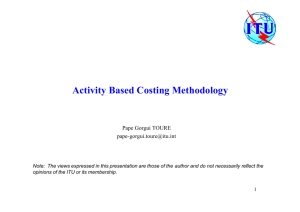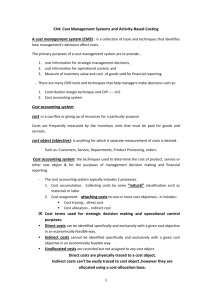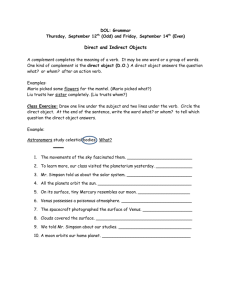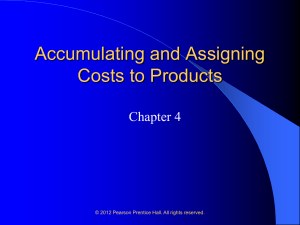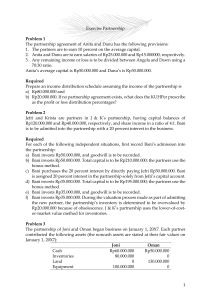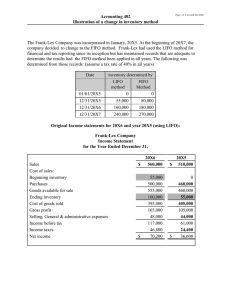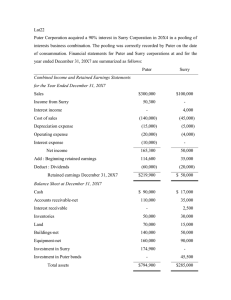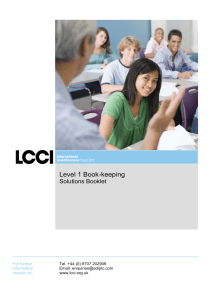CHAPTER 4 - Haiku Learning
advertisement
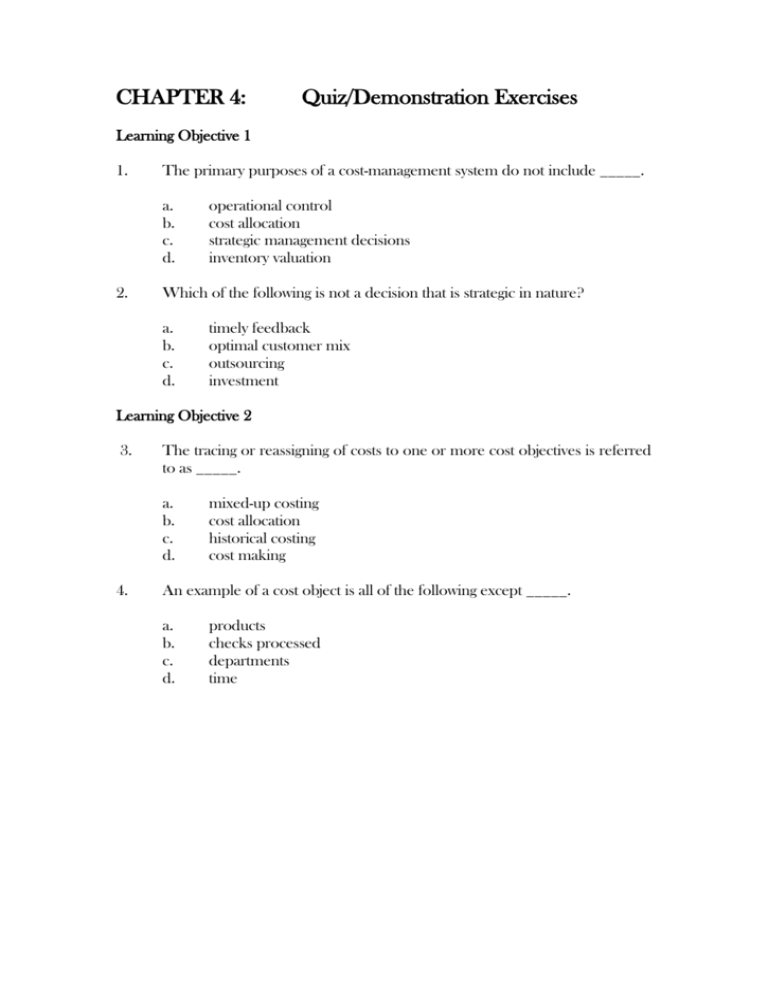
CHAPTER 4: Quiz/Demonstration Exercises Learning Objective 1 1. The primary purposes of a cost-management system do not include _____. a. b. c. d. 2. operational control cost allocation strategic management decisions inventory valuation Which of the following is not a decision that is strategic in nature? a. b. c. d. timely feedback optimal customer mix outsourcing investment Learning Objective 2 3. The tracing or reassigning of costs to one or more cost objectives is referred to as _____. a. b. c. d. 4. mixed-up costing cost allocation historical costing cost making An example of a cost object is all of the following except _____. a. b. c. d. products checks processed departments time Learning Objective 3 Items 5 and 6 are based on the following data: MARIO, Inc., incurred the following costs in 20x7 in producing the video games: Wages used Machine operators Factory janitors Factory supervisor 5. Computer chips Casings Labels Glue $300,000 200,000 100,000 25,000 Mario's 20x7 product indirect labor was _____. a. $ 20,000 370,000 6. $350,000 20,000 50,000 Materials b. $ 70,000 c. $ 350,000 d. $ d. $ Mario's product direct materials costs for 20x7 were _____. a. $ 625,000 b. $ 600,000 c. $ 300,000 25,000 Learning Objective 6 7. Which of the following can be variable costs? a. b. c. d. e. f. 8. raw materials indirect labor direct labor factory overhead only a., b., and c. a., b., c., and d. YIPPEE Company had the following partial balance sheet for the year ended 20x7. Cash Accounts receivable Merchandise inventories Plant and equipment YIPPEE is an example of a _____. a. b. c. manufacturing company service company wholesale organization $ 400,000 300,000 8,773,420 3,000,000 d. none of these Learning Objective 7 9. Cost drivers are usually selected based on which criteria? a. b. c. d. reasonable cause-and-effect relationship available data benefits outweigh the costs all of the above 10. A cost pool is a group of costs that is allocated to cost objectives using _____. a. b. c. d. e. at least two cost drivers the number of products made the number of products sold only one cost driver no more than five cost drivers Learning Objective 9 11. The third step in the design and implementation of an activity-based-costing system is _____. a. b. c. d. 12. calculate and interpret the activity-based information collect relevant data concerning costs determine cost objectives develop a processed-based map that represents the flow of activities Activity-based costing usually can _____. a. decrease the number of cost drivers b. reduce the accuracy of the cost allocations c. turn indirect costs into direct costs d. decrease the amount of money spend on a system CHAPTER 4: Exercises 1. [b] Solutions 2. [a] to Quiz/Demonstration 3. [b] 4. [d] 5. [b] If the cost objective is the product, then direct labor costs are those traceable to the product. Under most accounting systems, only the machine operators costs would be traceable to the product and the janitors and supervisors wages would be classified as indirect. If the entire manufacturing plant were considered the cost objective, then indirect labor would be $0. 6. [b] While all of the materials costs would be direct to the plant, only the computer chip, casing, and label costs would be direct to the product. 7. [f] 8. [c] 9. [d] Manufacturing companies typically have three categories of inventory while merchandisers have only one category listed in their balance sheets. The income statements also differ (e.g., a cost of goods manufactured and sold versus a cost of purchased goods sold). 10. [d] 11. [b] 12. [b]

